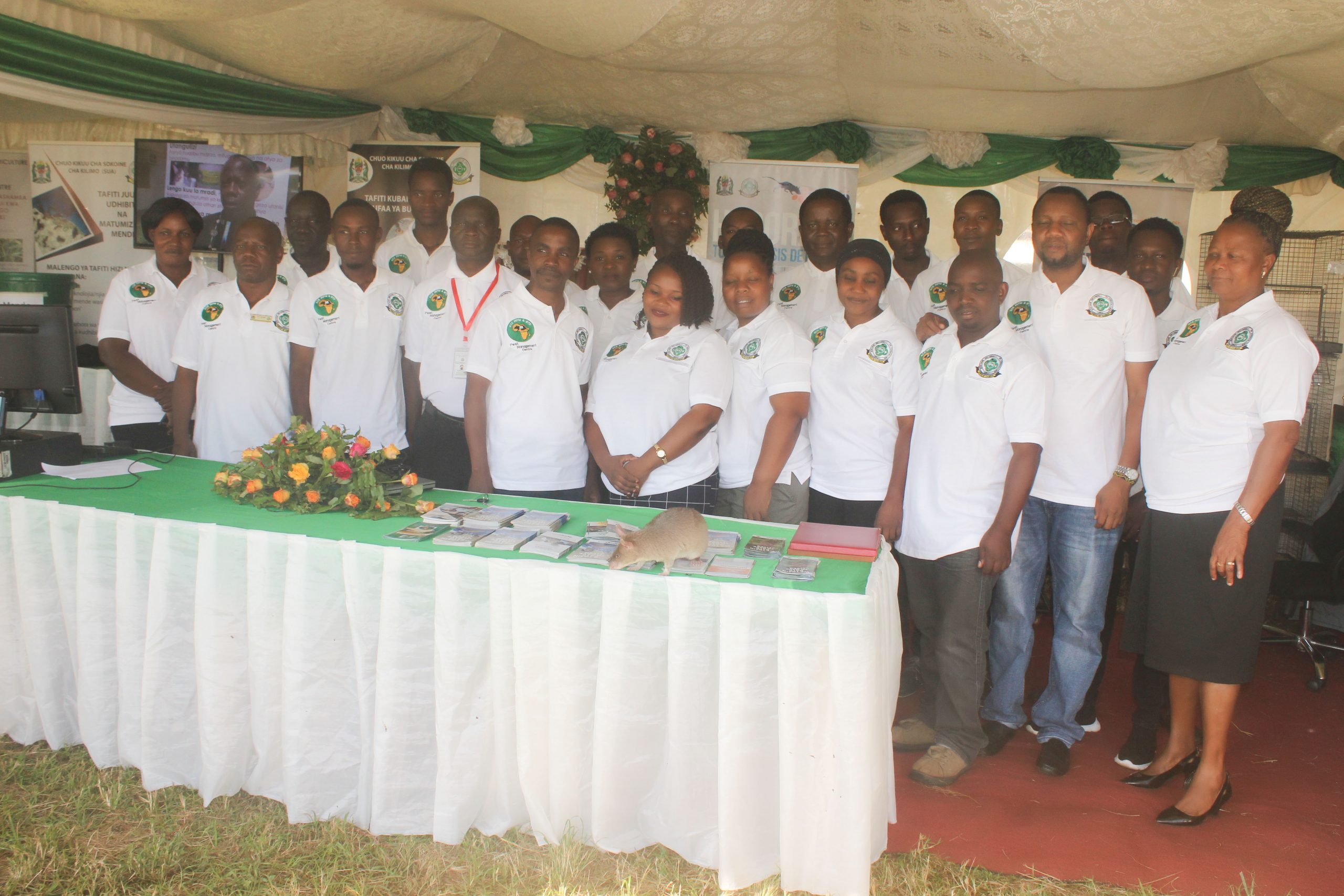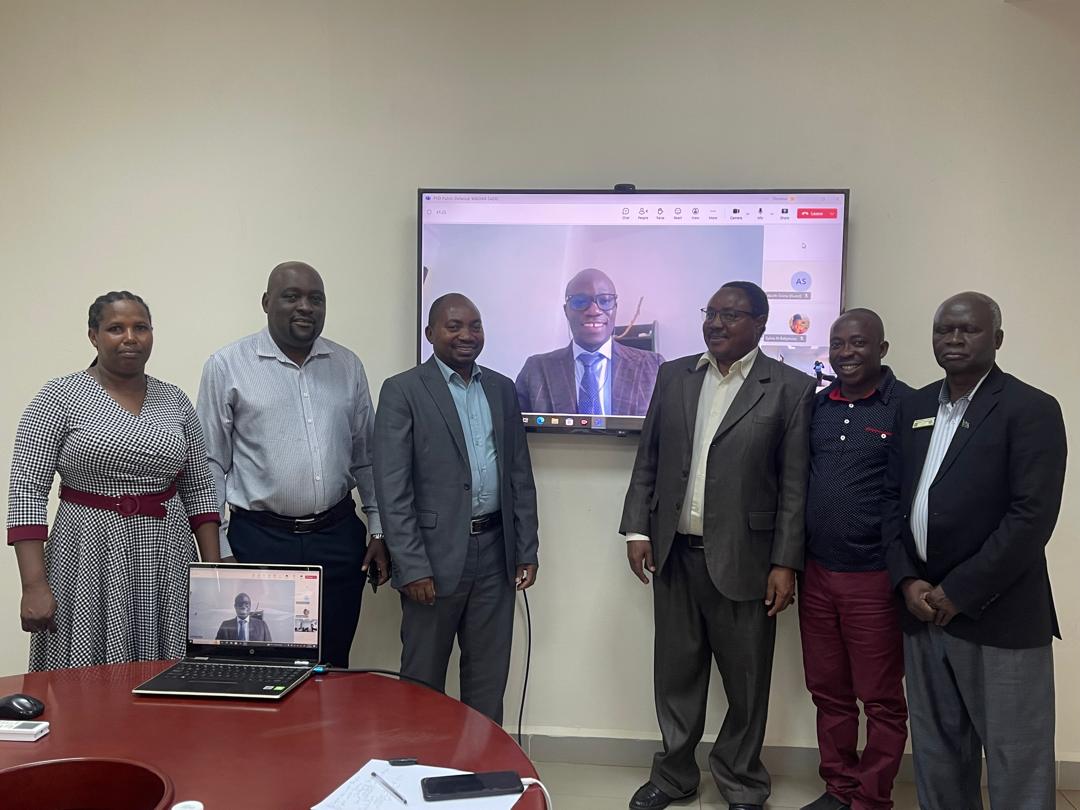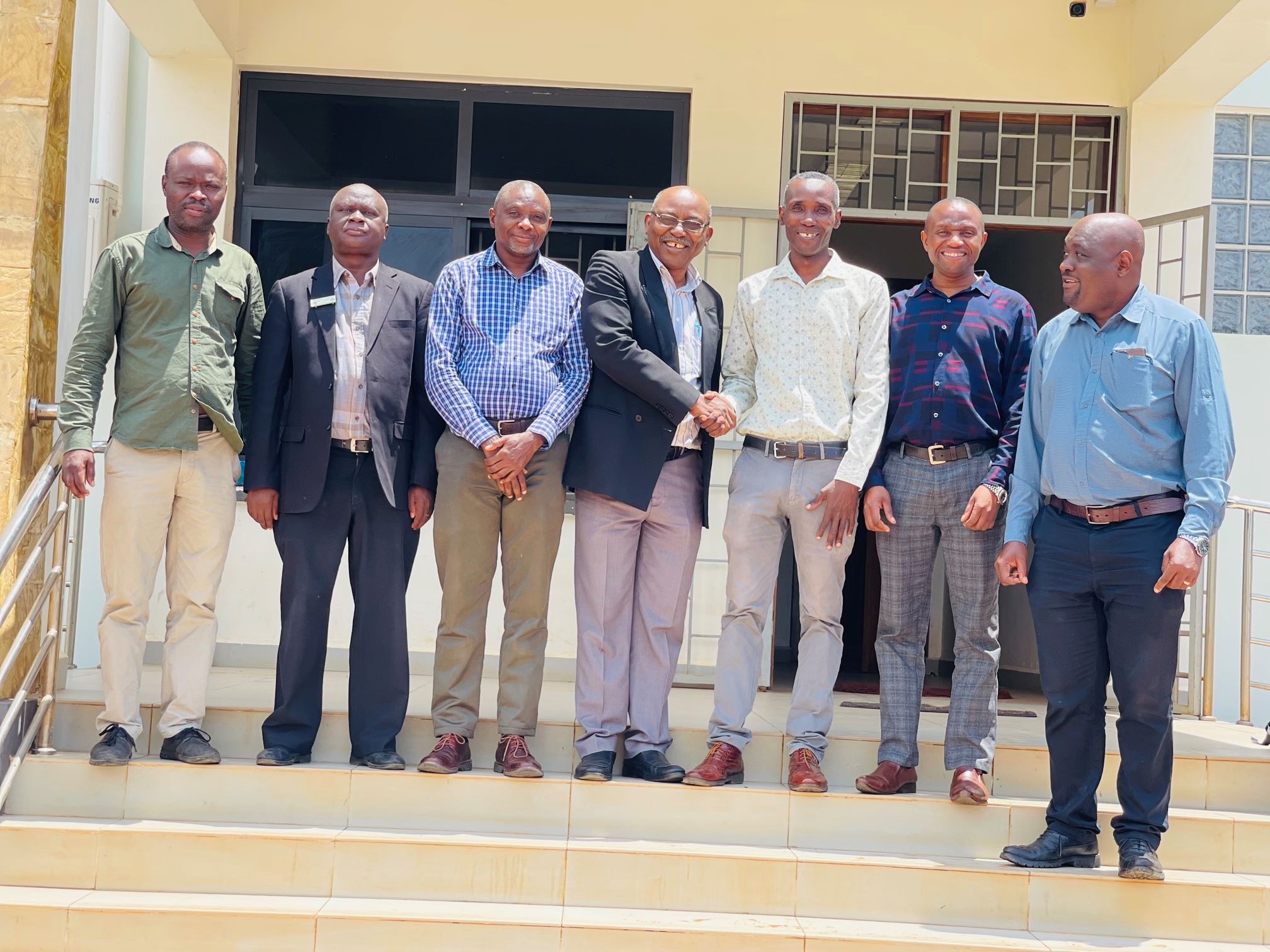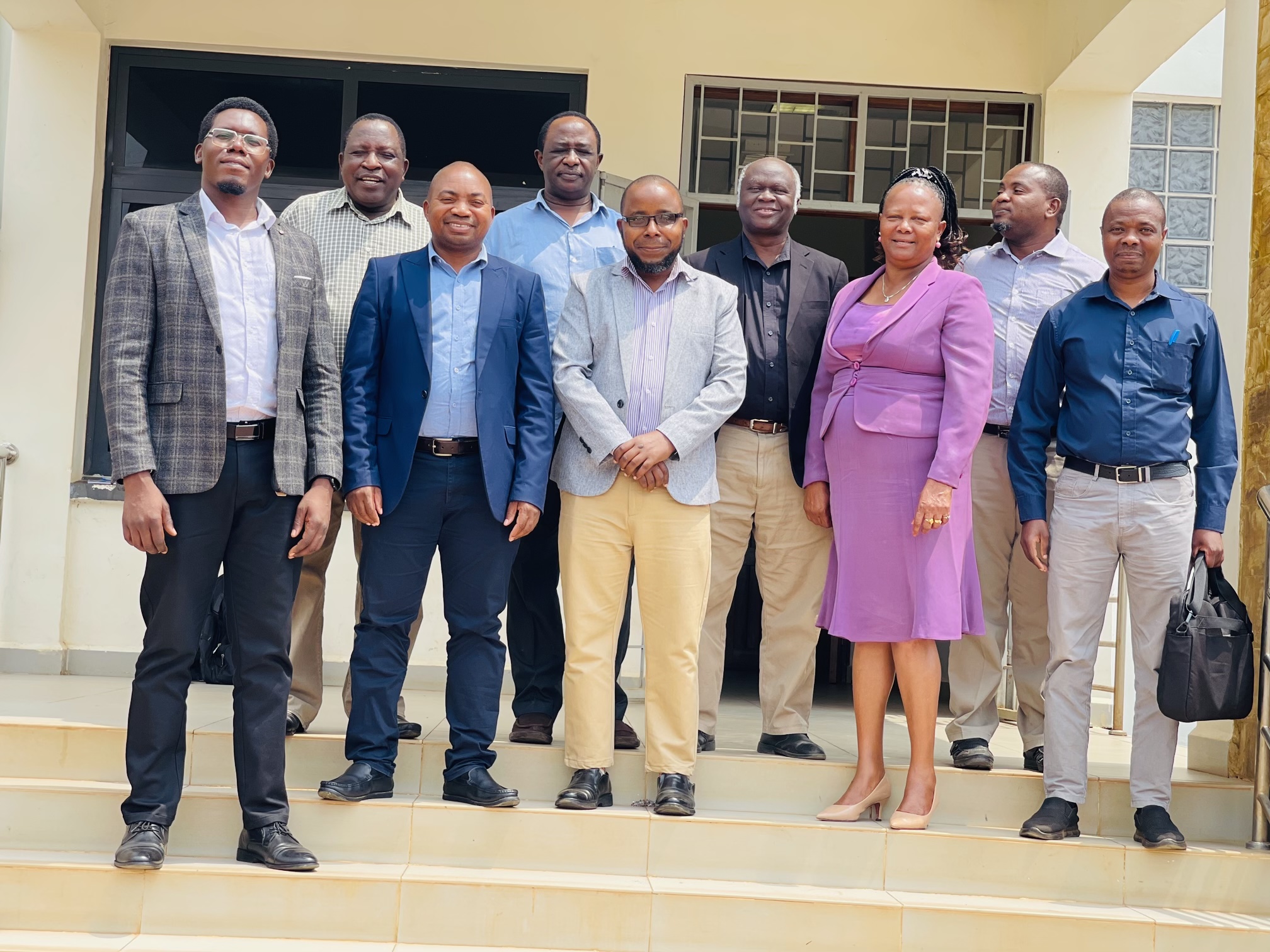The story of transformation from a tiny Belgian Government supported research project on “Rodents as disease carriers and crop destroyers” between 1986 -1989 that led to formation of the “Rodent Research Project” in 1990, “SUA Pest Management Centre” in 2000 and now “Institute of Pest Management” in 2021 is one of the most impressive academic developments both in terms of outputs and excellence at Sokoine University of Agriculture (SUA).
The Rodent Research Project which was under the Department of Microbiology and Parasitology in the then Faculty of Veterinary Medicine was in a real sense a minute establishment within the university structure, with only two national academic staff (Prof. Bukheti Kilonzo and Rhodes Makundi) and essentially, one expatriate staff (Prof. Walter Verheyen).
However, from the very humble beginning, the RRP had already established firm research collaboration links with Belgian, Danish and Italian scientists. These links resulted to major scientific outputs in terms of published articles in international peer reviewed journals.
In 1992, the RRP (under its first Coordinator Prof. Robert Machang’u) organized the First Workshop on Economic importance and control of rodents in Tanzania at SUA, Morogoro, 6-8 July 1992. That workshop was really important, I think, because it was there that Robert Machang’u and Herwig Leirs started discussing and decided that it was time to forget the still lingering conflict between the former Belgian and Tanzanian project coordinators, and that the two (Herwig and Robert) were going to write the first European project proposal on “Rodent biology and Integrated Pest Management in Agriculture and Public Health in East Africa“ which was granted under the EU-STD3 program, and which ran from 1994 – 1996.
Partners in this project were from Belgium, Tanzania (RCC, TPRI), Ethiopia, Denmark and Norway. It was also during that project that Belgian master students started coming to SUA. This project was the real kick-off for the international position of SUAPMC.
It wasn’t surprising that in 1996, the RRP hosted the first Conference on “Rodent Biology and Integrated Pest Management in Africa” (21 – 25th October 1996) at Sokoine University of Agriculture. The proceedings of this conference were published in the Belgian Journal of Zoology Vol. 127 (suppl) in October 1997, which by itself was a major achievement.
This was a true testimony of an evolving strong research on rodents in Tanzania and a good opening for the RRP to the international rodent research community.
The good achievements in research convinced the Sokoine University of Agriculture (SUA) Management that the RRP should transform into a SUA Pest Management Centre (SPMC). This was achieved in 2000.
The SPMC started from a very strong base. First, in 1997, Prof. Walter Verheyen and colleagues in the University of Antwerp, Catholic University of Louvain and University of Ghent had put up a proposal for a big project at Sokoine University of Agriculture, that aimed at supporting certain programmes, but the major beneficiary was to be the RRP before becoming SPMC.
In total, we were benefiting around 600,000 – 750,000 Euro annually for a period of 10 years. This was a major turning point for the SPMC because we were able to train new staff (Prof. Apia Massawe, Prof. Loth Mulungu, Dr Georgies Mgode, Mr Ginethon Mhamphi, Dr Jesse Pax, etc.), purchase equipment, employ expatriate staff. (Dr Carlo Fadda), support research, attend scientific conferences and carry out major rehabilitations of the SPMC building.
The programme also involved many student exchanges between the University of Antwerp and SPMC, leading to a strong collaboration continuing until today.
Three major players from Belgium were Prof. Walter Verheyen, Prof. Herwig Leirs and Prof. Ron Verhagen. Their roles in transforming and ensuring excellence in the activities of the SPMC cannot be underestimated. Locally, the leadership of Prof Robert Machang’u (Director SPMC 2000 – 2006), Prof. Rhodes H. Makundi (Director SPMC 2006 – 2014), Prof. Apia Massawe (Director SPMC 2014 – 2017) and Dr Laurent Mnyone (Director SPMC 2017 – to-date) in shaping the research agenda, maintenance of quality, management of resources, and ensuring continued strong regional and international collaborations made the SPMC a very productive Centre that everyone envied.
Indeed, when VLIR – UOS project ended in 2007, the external international evaluation team found out that the SPMC had performed so well in terms of resource management, research output (published articles) and training that they recommended that “The Belgian Government should look for a special award to be given to the SPMC for its excellent performance over the entire 10 years period of support”.
In response to this recommendation, the VLIR-UOS gave us an opportunity to come up with a proposal under the newly created Research Initiative Programme, which we subsequently won and got more funding from 2008 – 2012 after the VLIR-UOS programme ended.
The developments in research from late 1990s to early 2000 resulted in the establishment of the SUA – APOPO sniffer rats project for which the African Giant Pouched Rats, Cricetomys ansorgei are used as biosensors for landmines and tuberculosis. This was one of the major developments under the SPMC in the last 20 years and has become a flagship achievement of Sokoine University of Agriculture.
One major activity during this period was the organizing and hosting of the 9th International African Small Mammal Symposium (ASMS). The ASMS was held at SUA from 14 – 18th July 2003. The African Small Mammal Symposia are organized every fourth year and this conference was the first to be held in tropical Africa.
There were 114 participants from 31 countries and more than half of the attending scientists were from Africa. The contributions from Africa were a clear indications of the growth of the community of African small mammal scientists. The proceedings of the Conference were published in the Belgian Journal of Zoology Vol. 135 (Suppl.). This was again a major achievement of the SPMC as it continued to transform and increase excellence in its activities.
Transformation and excellence go hand in hand with availability of resources including financial and human resources. Over the years we have seen an increase in highly competent academic and technical staff. Much as the SPMC as it transforms to IPM is still understaffed, but the hard work, resilience and expertise of the current staff are highly appreciated.
On the financial aspect, it is tempting to state that the RRP, SPMC and now IPM have done wonders in attracting research funds. To state just a few of the projects, The first EU-STD3 project, the VLIR-UOS programme, the Research Initiative Programme, STAPLERAT, RATZOOMAN, Bill and Melinda Gates Foundation – TANURAT project, STOPRATS, ECORODMAN and ACE II – IRPM&BTD have brought in substantial funding of research activities and staff training which made us flourish, and enabled us to transform stepwise to the level of IPM.
The research projects also linked us to new partners whom we have continued to collaborate with. They include the University of Greenwich (UK) (Prof. Steve Belmain), University of Venda (South Africa) (Prof. Peter Taylor, Dr Lourens Swanepoel), University of Namibia (Dr Seth Eiseb), the University of Eswatini (Dr Themba Mahlaba, Prof. Ara Monadjem), the University of Mekelle (Prof. Yonas Meheretu, Dr Dawit KIdane), the Czech academy of Sciences, Busitema University (Uganda) (Prof. Moses Isabirye and Mr David Kifumba) etc.
The IPM will benefit, quite a lot, from the strong foundations laid down by the predecessors (RRP and SPMC). It is important to note that the Africa Centre of Excellence for Innovative Rodent Pest Management is training a critical mass of rodent scientists from across Africa who shall, through collaborative links increase the potential of the IPM to continue enjoying a level of success that will over shine many other units across the university and in Sub-Saharan Africa.
Currently, a quick estimate shows that each academic staff in the IPM has a publication rate of 3.5 articles per year compared to less than one for the rest of university staff.
The IPM performance is far above the average for academic staff in African Universities and is at par with academic staff in the more advanced countries in Europe, North America, Japan and Australia. This is an excellent performance and a strong start point for the IPM. Let us keep transforming and maintaining Excellence! We come from afar but we are not yet at the end of our journey.
Many other interesting things have happened over the years and they define who we are, what we are doing and what our achievements are. When people hear of Lophuromys sabunii, Lophuromys makundii, Lophuromys kilonzoi, Lophuromys machangui, Serovar Sokoine, sniffer rats detecting landmines and tuberculosis, fertility control of rats, owls controlling mice, cat urine repelling rats etc. they ask who are these individuals, where are they based and perhaps how can we link up with them and their institution? – This is SUA Institute of Pest Management (IPM) at Sokoine University of Agriculture in Morogoro Tanzania.
As we look into the future and transform the IPM for excellence let us also reflect back and ask what can we do better? Let us focus on innovations and how to use them to solve real world problems.
Story Credits:
Prof. Rhodes Makundi,
Institute of Pest Management,
Sokoine University of Agriculture




